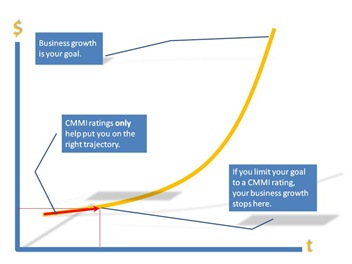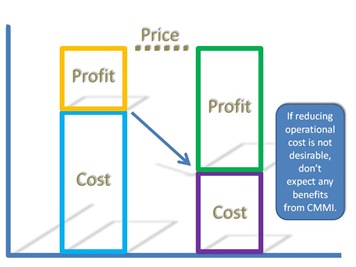I make a living helping companies improve their performance. Bar none, the absolute hardest challenge is dealing with outdated, defunct, and proven-failed management and leadership attitudes and techniques. It’s even harder when leaders won’t let go of them.
Attitudes that don’t account for the emotional needs of people.
Attitudes that don’t start with the fundamental requirement that tough or large changes require the top-down example and behavior to lead the way.
Attitudes that don’t stand up for what’s right and acquiesce to blatant cognitive dissonance.
Attitudes that fail to realize you can’t lay-out the company’s supposed mission or vision, or the staff’s objectives and goals, and not provide them with the tools or empowerment to make anything happen — or worse, to undermine efforts with behaviors and decisions that conflict with the messages.
Attitudes that perpetually fail to create sustainable results, superior performance, and legendary relationships among the company staff, and between the company and its suppliers and customers; yet they are the same attitudes that failure-destined leaders continue to retread in some insane hope or expectation that everything will work out on its own.
Well, here’s some not-so-profound news (which I’m pretty sure you didn’t need me to tell you): these attitudes are nothing short of leadership’s inability to own up to their responsibilities and accountability for actually doing what they’re there to do: lead.
Instead of leading you’ll often find such cowardly executives hiding behind backbone-belying excuses such as "I lead through delegation" (which, when said by these leaders actually means, "I really don’t know what to do to help you get your job done"), or "I trust my people to do the right thing" (which, when said by such leaders, actually means, "I’m lucky my people know what they’re doing because I don’t"), or "I’m serious about quality, I’ve made Joe, here, the company quality sheriff" (which is poser-leader-speak for, "I haven’t the foggiest idea what drives quality in our company and but it’s a problem and I don’t know how to fix it, but getting someone else to blame is a lot easier than getting mixed-up with all that touchy-feely stuff.").
Such leaders are nothing more than overpaid, over-indulged and over-honored paper-pushers whose lack of involvement in day-to-day operations is probably a blessing. Because, when they do get involved (especially considering their only natural inclination is to micro-manage if/when they bother), they typically don’t make things better.
In a profound way, most companies’ leaders simply don’t "get it", they won’t admit that they don’t get it, and they’re not open to having anyone help them get it.
One the basic "its" they don’t *get* is that what’s going on in their company is a culture, and because they don’t see what’s going on as a culture, or appreciate the role culture plays in making a business successful, they not only don’t see that what they need is to change the culture, but that in order to do so they must lead the change themselves.
Furthermore, they don’t see that what it means to change the culture is not to pass down new rules or to disseminate a verbal memo through subordinates, it means to get out and lead. To behave or simply *BE* the new culture. How flat does a new, great-sounding idea fall when it’s delivered in the same mechanisms as all the old, not-as-great (dare I say "dumb") ideas?
Do you agree?
Perhaps you need validation of your way of thinking.
Perhaps you need an example to follow.
Perhaps you need to crystallize your thoughts so you can pave a path.
Or perhaps you need something to believe in, something to help you find a better way to work, place to work, or how to start making a difference in your work life and work-life balance.
Maybe you’re someone who’s been burned trying such non-traditional ideas and you’re seeking what might have been missing, or a simple reflection on a point you didn’t see or know to look for.
In any case, if you are seeking how to understand and positively influence culture as a primary business driver of positive change and astounding accomplishments, then Tony’ Hseih’s Delivering Happiness is a must read. Scratch that. If you’re reading this review this far you MUST read. Delivering Happiness. Even if you’re currently not big on culture as a business driver, or, if you think you know about culture and business but secretly, deep down, you really have no clue what it is, how it looks, or how to create the one you want, you must read this book. If you *know* your business has a culture problem but don’t know what to do about it, read this book.
The amazing things Tony and his team have accomplished by putting _happiness_ at the center of their existence and by making it unmistakably simple to lead by example will leave you wondering why it’s taken anyone this long to put this sort of content together. There is nothing new in leading by example. It’s talked about, written about, lectured about in every credible business and management venue anywhere at any time in history. But, one thing (of many others) unique in Tony’s book is that he actually conveys _what_that_looks_like_. It’s not just words to him and his team. It’s how they *are*. It’s in everything they do and say and consider. They wanted a certain culture? They *became* that culture and started every action from there. It’s in how they treat each other, their customers, their suppliers, their partners and their extended relationships. They want to sustain that culture? They *built* and *rebuilt* their existence to continually refine what it takes to generate the culture they want. Delivering Happiness is like being the ultimate "fly on the wall" to get the insight into answering the question most business books and theories frustratingly fail to answer, "OK, I get what you /describe/, but what did you *do*?!" This book lays it out.
Delivering Happiness will probably make you wonder why bother with any other business approach, and even why bother with any other business book! It’s as though all you ever wanted to know about running a business and making people happy (either as one, the other, or both) are in his 272-page first offering. I’m not saying other business books don’t matter, and that other business books don’t have valuable insights and concepts. What I’m saying is that Delivering Happiness is so fundamental that it almost makes no sense to start elsewhere. If business leaders don’t understand the fundamentals of the role culture plays in their success and what to do to generate the culture they want, then little else can help.
Tony’s done great research. Thanks (or no thanks?) to Delivering Happiness, my reading list has not only grown, but has sprouted an entirely new branch of exploration. It’s fascinating stuff. I was so intrigued I rescheduled several days’ plans to finish-up some of the reading I had already started so I could clear my reading time and my mind for the new stuff Tony introduced me to.
Get it here.
Not only does Tony make an eloquent and convincing case for the influence and effects of business culture, but his amazing story about Zappos.com and the insights from places he worked or owned before — as they all relate to _happiness_ http://www.deliveringhappinessbook.com/ — are inspiring and instructive — for anyone with an open mind.
And… not the kind of "open mind" that rationalizes nonsense, but the kind of open mind that’s open to questioning tradition; asking where a tradition came from and why it continues to exist despite its time having come and gone. The kind of open mind that’s continually seeking better ideas built on progress and results, not on reactionary fears, theory, or short-term thinking. And, the kind of open mind that’s ready to make a really big difference in their work, life, or in the world, and not cling to stale thinking born of a time when those old ideas were once new.
It’s time to replace those ideas with ideas built in and for the 21st Century. It’s time for ideas that deliver results. It’s time to start Delivering Happiness.
P.S. I received a free copy of the book so that I could read it and write an honest review about it in time for the launch date. I received my free copy on nothing but the promise that I would write an honest review, and, all I received was the free book. Other than my own integrity, I had no compelling reason to keep my promise. I didn’t have to read the book, or write a review, or even write a positive review. In fact, I could just as easily have written a review (irrespective of whether or not I’d read it) trashing the book — if it were trash. But it’s not. I have received plenty of free books to review and even requests to write forewords, summaries, afterwards, etc. I have written (and had published) unflattering reviews (not something I relish) and I’ve also chosen not to write a review or contribute to a work when, as in the case of reviews, there was little nice to say, or in the case of contributions, I didn’t want to associate with the work. All this is just to say: this is a very honest, unencumbered review. There are no strings attached in any way for having written it. Go read Delivering Happiness. You’ll be glad you did.
P.P.S. There’s also a Tweeter (@dhbook) to follow, and a community to join, and a Facebook crowd to like. If this is your thing, I encourage you do so.
 If getting leaner isn’t appealing, stay away from CMMI.
If getting leaner isn’t appealing, stay away from CMMI. On the other hand, what can we consultants and appraisers do when executives willingly take the “ratings over growth” route? When executives are not willing to stand up for what’s best for the business? When the executives are not motivated to pursue operational excellence? At the same time, we’ve all been using the wrong language with CMMI. Who the heck wants to hear about “process improvement”?!? That’s a lot like wanting to hear “you need to go on a diet and get more exercise”. Who wants that?
On the other hand, what can we consultants and appraisers do when executives willingly take the “ratings over growth” route? When executives are not willing to stand up for what’s best for the business? When the executives are not motivated to pursue operational excellence? At the same time, we’ve all been using the wrong language with CMMI. Who the heck wants to hear about “process improvement”?!? That’s a lot like wanting to hear “you need to go on a diet and get more exercise”. Who wants that?



